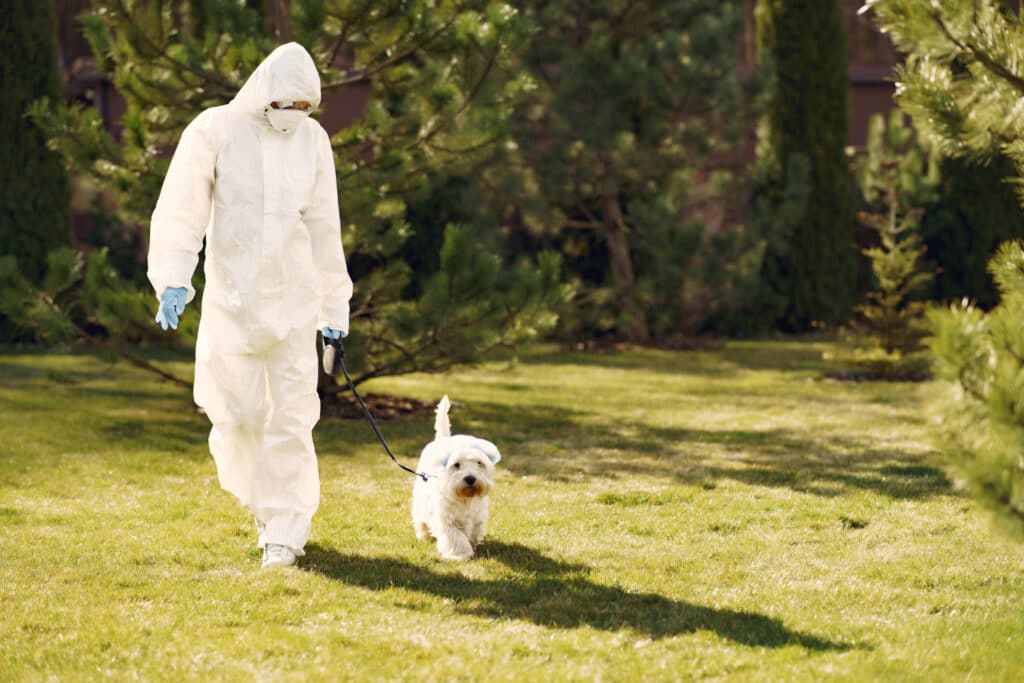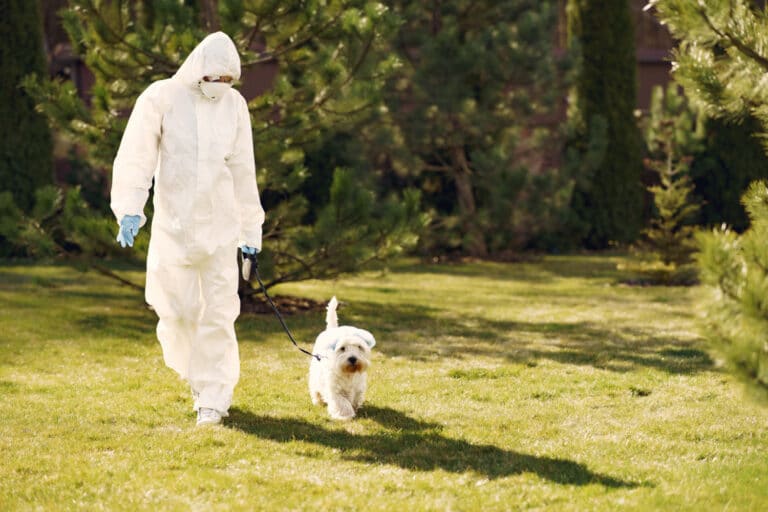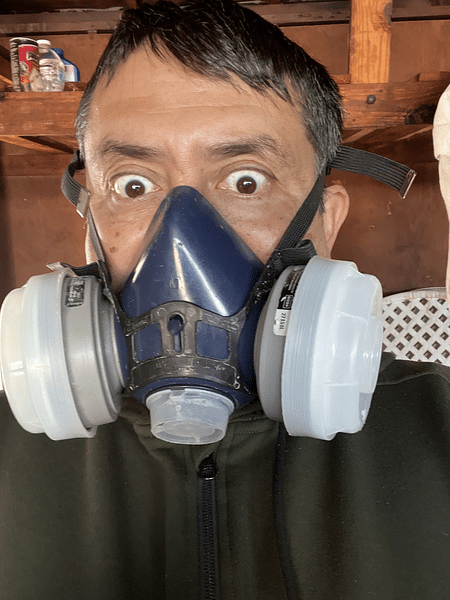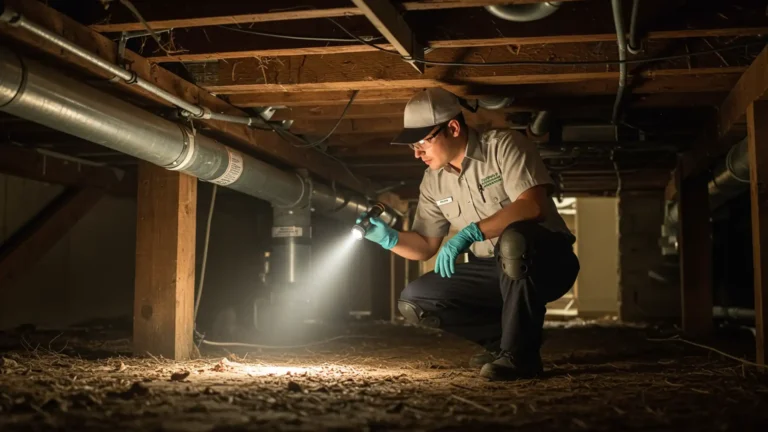Most families worry about this question because a dog is part of the family. The good news is that professional pest control can be safe for dogs when a trained technician selects targeted products, applies them in the right places, and gives you clear before and after instructions that are easy to follow.
What Makes Dog Safety a Real Priority
Dogs explore their world with noses, tongues, and paws, which means they contact floors, baseboards, and yard edges far more than we do. That is why placement and timing matter. When applications go into cracks, crevices, and voids and are allowed to dry fully, your dog can return to normal routines without worry.
Is Pest Control Safe for Dogs During Treatment Day?
On service day, plan a quiet space or short outing so your dog stays away from active work areas. Pick up bowls, beds, and toys before the visit and return them once surfaces are dry. Your technician will label treated zones, explain the expected dry time, and confirm when it is safe for paws to roam again.
Is Pest Control Safe for Dogs With Modern Products?
Today’s professional products are designed to target specific pests at low concentrations and to bind where insects live rather than where pets relax. Many programs rely on gels, secure bait stations, and wall void dusts that sit out of reach while still delivering strong results. Following the product label and your technician’s directions keeps the process predictable and safe.
If you want more background while you decide, you can read more about our approach to pest control in Riverside.
Signs Your Dog Will Need Extra Care
Some dogs are small, senior, or sensitive, and a few have allergies or respiratory issues. If that sounds familiar, tell your technician so the plan can adjust, which may mean gentler formulas, narrower placements, or splitting the home into zones so your dog always has a comfortable space during and after treatment. Clear communication makes the day smooth for everyone.
Is Pest Control Safe for Dogs When You Hire Pros?
Correct dosage, precise placement, and verified dry times come from training and experience. A good service includes a walkthrough before treatment, protection of pet areas, careful application only where pests harbor, and a final review so you know what was treated, what to watch for, and exactly when rooms are ready again.
Learn more from the U.S. Environmental Protection Agency about pesticide safety for families with animals.
What to Do Before Your Appointment
Light cleaning improves results because pests thrive on crumbs, grease, and clutter. Vacuum and mop, clear under sinks and along baseboards, and bag washable pet items for a quick cycle later. Arrange a crate, a closed room, or a short car ride with a friend so your dog stays relaxed while work begins.
What to Do After Your Appointment
Respect the stated dry times and keep paws off treated areas until your technician gives the all clear. Open windows if suggested, then return bowls, beds, and toys once surfaces are ready. Wash bedding on a normal cycle, rinse food and water bowls, and keep the follow up schedule because steady prevention usually means less product overall.
Is Pest Control Safe for Dogs After Your Service?
When surfaces are dry and rooms are aired as directed, your dog can play and rest like normal. Some pets love to roll on rugs or lick baseboards out of curiosity, so redirect if you notice that behavior. If you ever see unusual signs such as persistent drooling or stomach upset, call your veterinarian first and then let us know so we can help you troubleshoot right away.
Common Myths That Scare Pet Parents
Myth 1: All sprays are the same.
Not true. Products vary a lot. Pros choose the right one for the pest and the room.
Myth 2: More product means more safety.
No. More does not mean better. Correct dose is the safest dose.
Myth 3: Natural always means safe for dogs.
Not always. Some oils can bother dogs. Some can harm cats. So we still follow labels and vet advice.
Indoor vs Outdoor Work in Riverside Homes
Indoor work focuses on cracks, edges, and voids so pets do not contact those surfaces once they are dry. Outdoor service targets the foundation, eaves, and planting beds, and technicians avoid dog paths and lawn play zones whenever possible. If a lawn edge needs treatment, we mark it during the visit and remove markers once the area is cleared for use.
What About Fleas and Ticks on Pets?
The best results against fleas and ticks come from a home and yard plan combined with a veterinarian approved product for your dog. House treatments interrupt eggs and larvae while the collar, chew, or topical protects the pet from bites. Your veterinarian can match the right preventive to your dog’s age, health, and lifestyle.
How We Protect Water Bowls, Toys, and Beds
Food and water bowls, toys, and beds should be stored in sealed bins during the visit and returned after the all clear. Bait stations are locked and placed in inaccessible locations, and technicians map placements so you always know where devices are located. This simple routine reduces curiosity and keeps everything organized for future visits.
Is Pest Control Safe for Dogs for Every Breed and Size?
Tiny breeds may need a longer break from treated rooms, seniors may prefer a quieter space, and working or high energy dogs may benefit from more structure during service hours. Share habits like wall licking, baseboard chewing, or vent napping and your technician will tailor the day to fit your dog rather than forcing your dog to fit the plan.
The Real Goal in Riverside Homes
Effective pest control is always about prevention first. Seal gaps, repair screens, store dog food in closed containers, wipe counters nightly, and fix moisture issues so pests do not find food or water. When the environment is less attractive to pests, you typically need fewer treatments over time which further supports pet safety.
Quick Checklist for Pet Parents
Book your visit on a day you can be home.
Prep rooms and bag pet items.
Set up a safe space for your dog.
Follow dry times.
Wash bowls and bedding.
Keep follow ups on track.
Call us if you have any concerns.
Is Pest Control Safe for Dogs When You Choose Southland Pest?
Yes, and we keep the process simple. You get a pet first plan, modern products selected for your home, and a clear schedule that respects dry times and routines. We explain what we are doing, why it helps, and how to maintain results so your home stays comfortable and your dog stays happy.
Ready for a plan built around your home and your dog in Riverside? Schedule your pet-safe service with Southland Pest Control and get clear steps, expert care, and reliable results.











